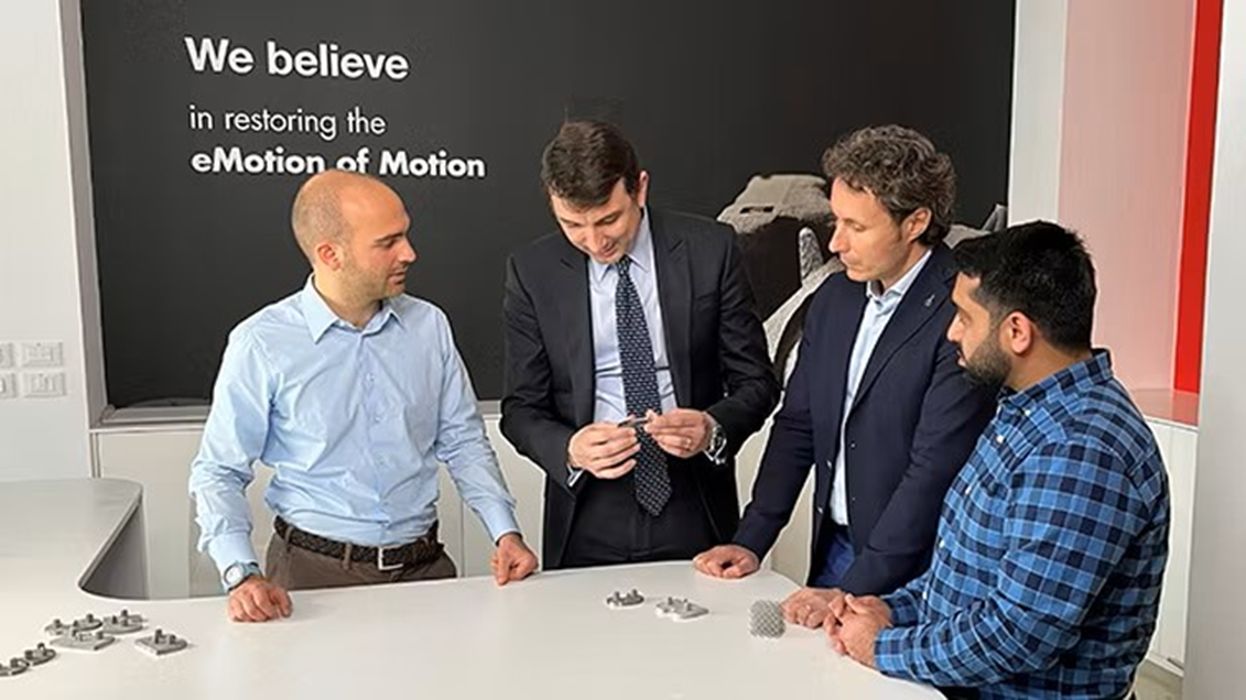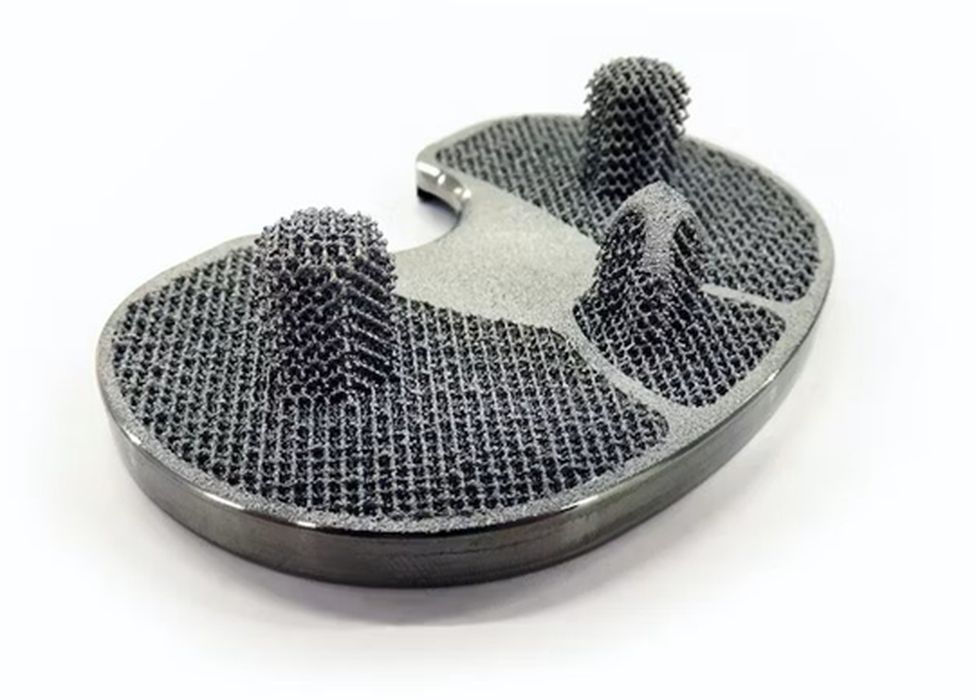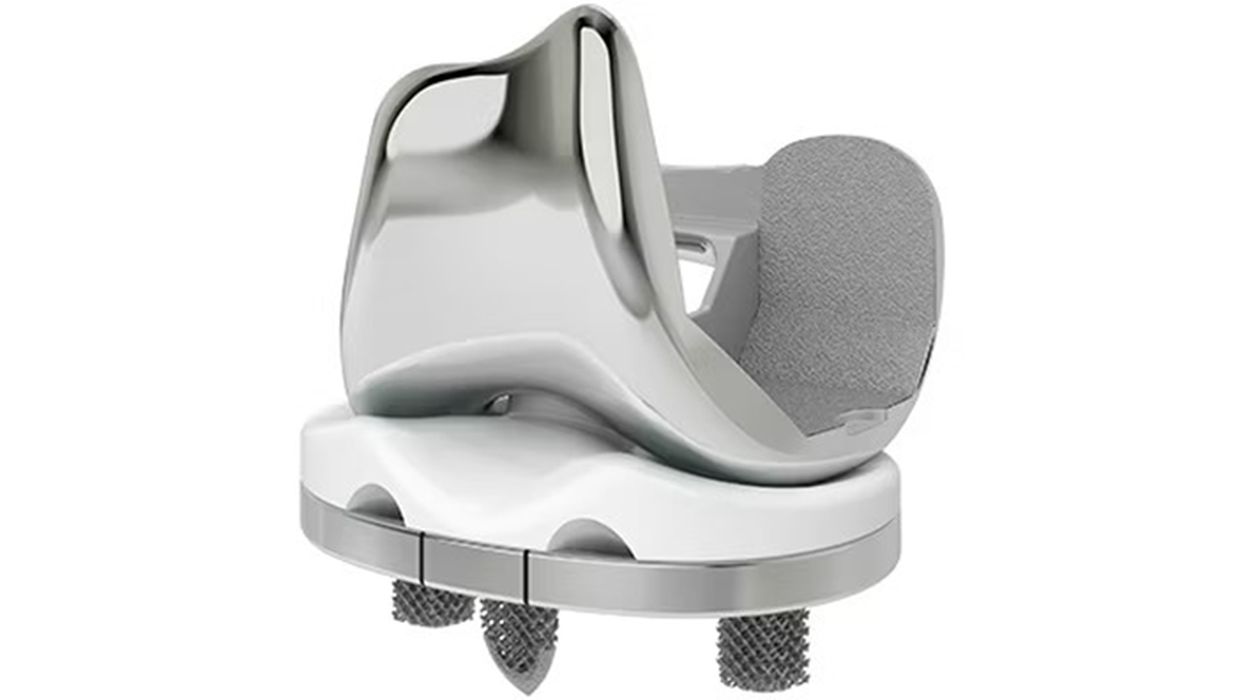
Charles R. Goulding and Preeti Sulibhavi discuss the successes that LimaCorporate has had with 3D printed implants.
According to the American Academy of Orthopedic Surgeons, over 790,000 knee replacement surgeries are performed in the United States annually.
The average age of a knee replacement patient is 70 years, but many elect for the surgery as young as 50 years of age. We have previously written about how having longer life spans can result in more worn body parts, including knee joints.
Approximately 90 percent of knee replacements last ten years and 80 percent last for 20 plus years. The success rate is extremely high with help from 3D printing.
LimaCorporate, in collaboration with Siemens, has teamed up with the Hospital for Special Surgery (HSS) in order to create a 3D printed, cementless knee implant. It’s revolutionizing knee replacement surgery for several reasons. We have covered LimaCorporate and HSS’ ProMade Point of Care Center for Complex Orthopedic Solutions (ProMade PoC), the first provider-based 3D design and printing facility for custom complex joint replacement solutions. But this development is groundbreaking.

One key to their success was collaborating with Siemens Digital Industries Software and using its NX™ Additive Manufacturing software to reduce AM development time by 50 percent.
The fact that the 3D printed implants are cement-less is a big advantage because, as Michele Pressacco, vice president of research and development at LimaCorporate has said:
“With cemented arthroplasty, the fixation of the implant to the bone is strongest at time zero, the day of implementation. Over the years, the quality of fixation decreases. With cementless arthroplasty using lattice-based metals, the weakest fixation is at time zero; then bone ingrowth strengthens over time.”
The lattice structure is where LimaCorporate saw its big opportunity. “We envisioned combining porous and solid titanium in a single step through 3D printing with no need for coating,” says Pressacco. To accomplish this, the company invented Trabecular Titanium™ (TT) in 2007, a proprietary 3D structure that can be repeated in a design and combined with the solid parts of a prosthesis using AM powder bed fusion. Hence, cement-less, 3D printed joint prostheses.

The first success story for LimaCorporate came with its TT acetabular cup in 2007, for hip replacement surgeries. The success of the acetabular cup motivated LimaCorporate to 3D print the cementless knee implant. With competition recently rising, LimaCorporate has been improving the speed and efficiency of its AM workflow.
Riccardo Toninato, the AM manager at LimaCorporate, was the one who worked on an extensive study with LimaCorporate R&D and HSS. According to Toninato:
“We’ve reduced AM modeling and job preparation time by 50 percent. With design optimization, we’re zeroing in on candidate designs with fewer experiments. And having everything in the Siemens software ecosystem has reduced errors and boosted reliability.”
LimaCorporate has seen direct benefits from working with Siemens to improve its AM processes.
The Research & Development Tax Credit
The now permanent Research and Development (R&D) Tax Credit is available for companies developing new or improved products, processes and/or software.
3D printing can help boost a company’s R&D Tax Credits. Wages for technical employees creating, testing and revising 3D printed prototypes can be included as a percentage of eligible time spent for the R&D Tax Credit. Similarly, when used as a method of improving a process, time spent integrating 3D printing hardware and software counts as an eligible activity. Lastly, when used for modeling and preproduction, the costs of filaments consumed during the development process may also be recovered.
Whether it is used for creating and testing prototypes or for final production, 3D printing is a great indicator that R&D Credit eligible activities are taking place. Companies implementing this technology at any point should consider taking advantage of R&D Tax Credits.
Conclusion
This groundbreaking biomedical engineering development will transform knee replacement surgeries and help improve health outcomes for so many. We believe that the integration of 3D printing is pivotal in creating customized and complex cementless knee implants.
